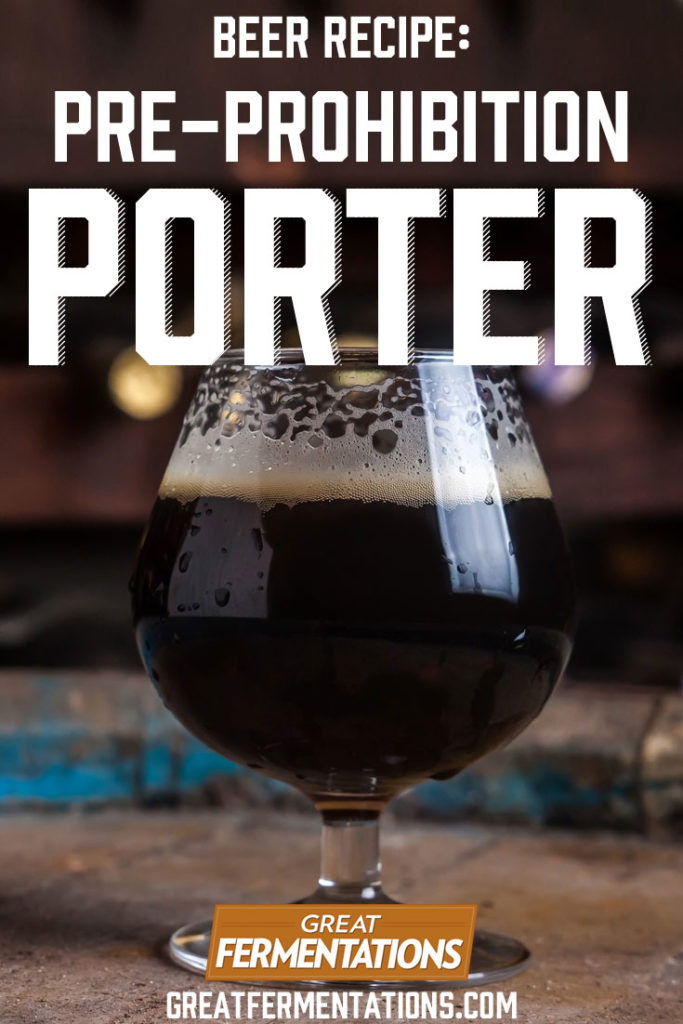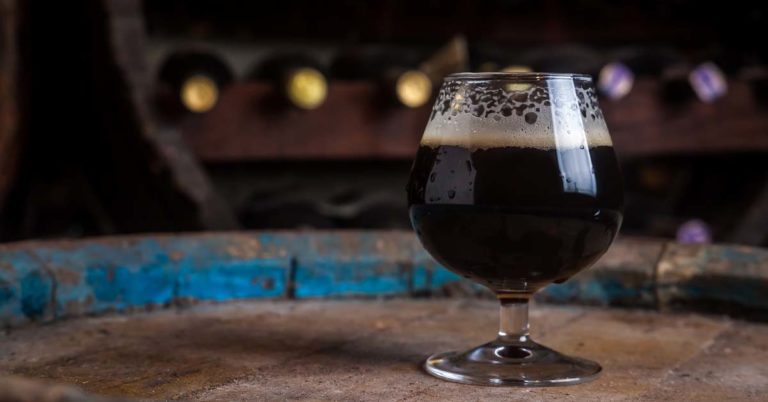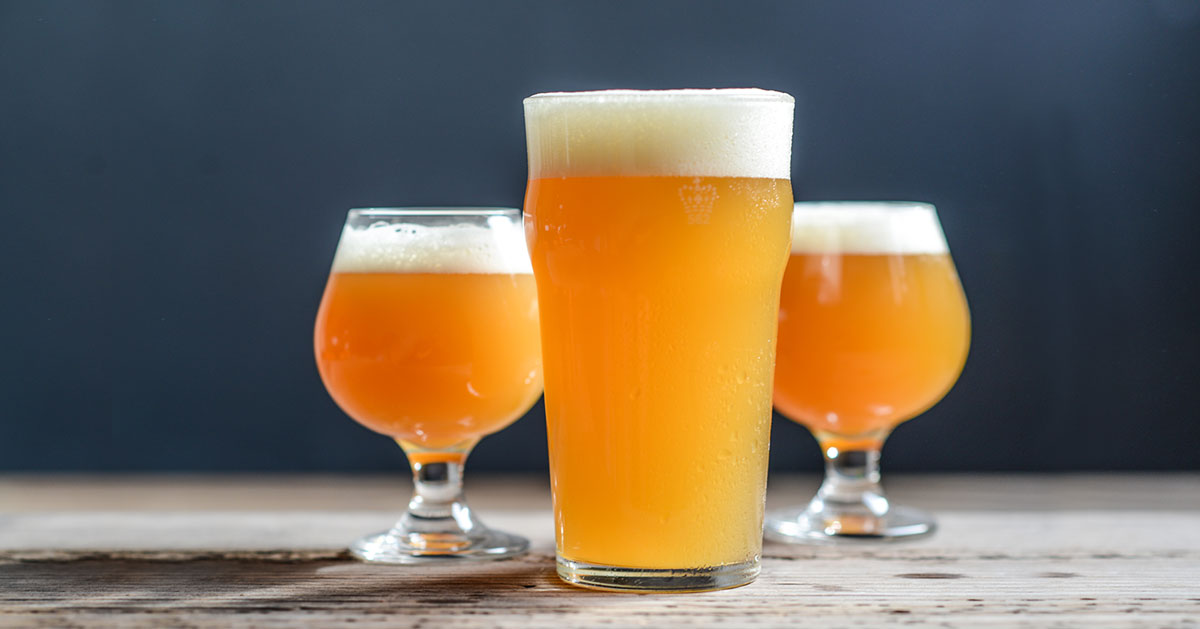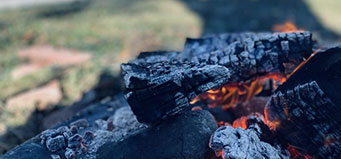Volstead’s Folly: Pre-Prohibition Porter
Autumn…what a perfect time for a porter! Of course, there are several kinds of porters. Though the dark, chocolatey beer treat hails originally from England, it had disseminated throughout the world and been localized to several countries and places. We think of brown porters, robust porters and Baltic porters as generally covering the whole of the porter world, with possibly a modern American porter in the mix. However, if we look back on history, we can find yet another type of this delicious, dark style: pre-prohibition porter. Recognized in the latest revision of BJCP guidelines in 2015, pre-prohibition porter is a style of beer brought to the New World by English colonist and adapted to the local ingredients and by other immigrants to the burgeoning United States.
This style was recently outlined by Gordon Strong in the October 2016 edition of Brew Your Own magazine, in which he does an excellent job of breaking down the style and giving some background. The gist of the history of pre-prohibition porter goes something like this: porter was brewed in the colonies and during the early days of the United States using native ingredients, like squash and corn as part of the mash, requiring less grain and using resources that were plentiful. German immigrants brought lager brewing techniques with them, and this allowed porters to be brewed as lagers, giving them a cleanliness that was a change from the more fruity ale yeast strains that had been used.
Then prohibition and war came about, and changed the brewing landscape forever. Porters fell out of style until a revival in the second half of the twentieth century, during which traditional English techniques and ingredients were used. A few examples of the pre-prohibition style did survive in the Northwest, which is why the style is sometimes known affectionately as “Pennsylvania Porter.” These pre-prohibition porters tend to be cleaner and less sweet than their English counterparts, taking full advantage of American adjuncts and lager fermentation (though they can still be made as ales, you want a nice, clean ale strain with lower temperatures to keep esters under control.)
When we read the article in Brew Your Own, we thought this was a perfect opportunity to come up with our own pre-prohibition porter recipe that incorporates locally-produced pre-prohibition 6-row from Sugar Creek Malting Co. This 6-row is kilned to a darker color (6 – 8 SRM) than most standard base malts, and has a good bready flavor and a deep nuttiness that is wonderful in dark beers.
For our recipe, we will follow most of the new BJCP guidelines as far as grain and hops are concerned. Along with pre-prohibition 6-row, we will use 2 lbs of flaked corn for extra adjunct sugars, 1 lb of chocolate malt for color and flavor, and just 0.5 lb of crystal 80L for just a touch more color, residual sweetness, body and head retention. For hops, we’ll stick with two additions of Willamette hops, an American cultivar with Fuggle parentage. We’ll add 1 oz each at 60 and 20 minutes respectively.
For lager yeast, I like to use a California lager strain to get that lager cleanliness without all the temperature control. I will ferment this one at around 64F, though if you have precise temperature control, a good standby for lager strains is a Bohemian lager strain.
Let’s give it a try!
Volstead’s Folly Pre-Prohibition Porter (for final volume of 5.5 gallons)
Specs
Estimated O.G. = 1.056
Estimated F.G. = 1.015
Estimated ABV = 5.4%
Estimated bitterness = 28 IBUs
Estimated SRM: 29
Grain Bill
9 lbs. Sugar Creek Pre-Prohibition 6-Row Malt
2 lbs. Flaked Maize (Corn)
1 lb. Chocolate Malt
0.5 lb. Crystal 80L Malt
Hops
1oz Willamette hops (5.5% AA), added at the beginning of the 60 minute boil.
1 oz Willamette hops added with 20 minutes left in the boil.
Yeast
2 packs (or make an appropriate starter) of Wyeast 2112 California Lager yeast, Or 1 can of Imperial Organic Yeast L05 Cablecar. If doing traditional lagering, use 3 packs (or make an appropriate starter) of Wyeast 2124 Bohemian Lager yeast, or 1 to 2 cans of Imperial Organic Yeast L13 Global.
Brewing Process
- Mash at 150-152F for 60 minutes. A mash-out at 168-170F for 15 minutes is recommended, but not necessary. Drain, sparge, and proceed with a 60 minute boil.
- Chill to 64F and pitch yeast. Ferment at 64F for two to three weeks before bottling or kegging. A secondary fermentation for one week to improve clarity and reduce sedimentation is optional. If using a traditional lager strain, chill to 48-54F. Pitch yeast and ferment between 48-54F. Once the gravity has dropped to about 3/4 of the expected final gravity, raise the temperature by 10 degrees for 2-3 days or until primary fermentation is complete, then drop the temperature to 34-42F for lagering and lager for 2-6 weeks before bottling or kegging.
- Extract Version: Replace the Sugar Creek pre-prohibition 6-row with 5 lbs of light dry malt extract, and replace the 2 lbs of flaked maize with 1 lb of corn sugar. Steep the specialty grains (chocolate and crystal 80L) at 150-155F for 30 minutes using a muslin grain bag, working the grains with a spoon thoroughly to get them hydrated and extract color and flavor . Remove the bag, allowing the grains to drain into the boil kettle. Turn off the flame and dissolve the extract in the kettle. Turn the flame back on, bring to a boil and proceed as as above, adding the corn sugar with 10 minutes left in the boil. NOTE: as the extract version is slightly different than the all-grain, you may have a slightly different starting gravity at the beginning of fermentation.




